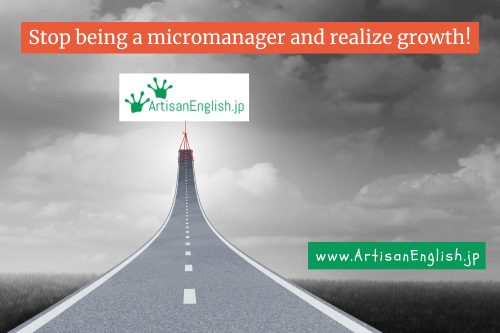
YouTube / iTunes / Spotify / Radio Public / Pocket Casts / Google Podcasts / Breaker / Overcast
Listen to ArtisanEnglish.jp posts & lesson intros here.
WotD: Micromanager
Micromanagement is a leadership style characterized by excessive control, scrutiny of details, and a lack of trust in employees’ abilities to work independently.
While some micromanagers may have good intentions, this management style often leads to negative consequences in the workplace.
For this reason, micromanagers need to find a balance between control and trust.
Being a micromanager is not all bad.
One of the benefits of micromanagers is they can ensure tasks are completed to their standards.
They pay close attention to details and ensure nothing falls through the cracks.
However, this level of control can be stifling for employees, leading to a lack of agency and creativity.
Micromanagers may also struggle with delegating tasks, which can lead to a bottleneck in decision-making processes.
Micromanagers often experience burnout because of the intense focus on the small details.
Their constant need to be involved in every aspect of their employees’ work can be mentally and emotionally exhausting.
Additionally, the lack of trust in their team can lead to a self-fulfilling prophecy, as employees may depend on the micromanager for direction and guidance, further reinforcing the manager’s belief that they are the only ones capable of adequately handling tasks.
While micromanagers may have good intentions, their approach often leads to negative outcomes for themselves and their team.
Remember, the road to hell is paved with good intentions.
Finding a healthy balance between control and trust is crucial for creating a positive and productive work environment.
Micromanagers should learn to empower their subordinates and foster a culture of autonomy.
This will mitigate the drawbacks of micromanagement and create a more engaged and efficient team.
Flesch-Kincaid Readability Test
This post compares in readability to The New York Times.
It is likely to be understood by a reader who has at least a 10th-grade education (age 16).
On the Flesch-Kincaid reading-ease test, this post scores 43.
The easier a passage is to read, the higher the score on a scale of 0 – 100.

